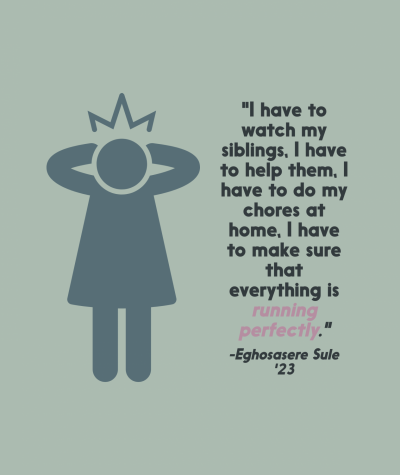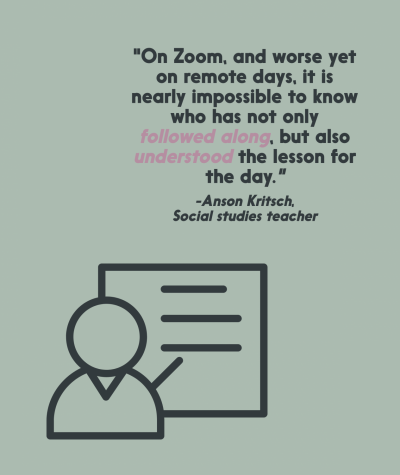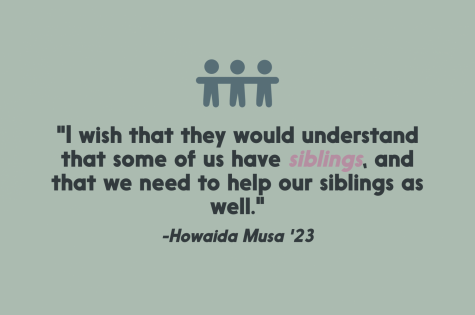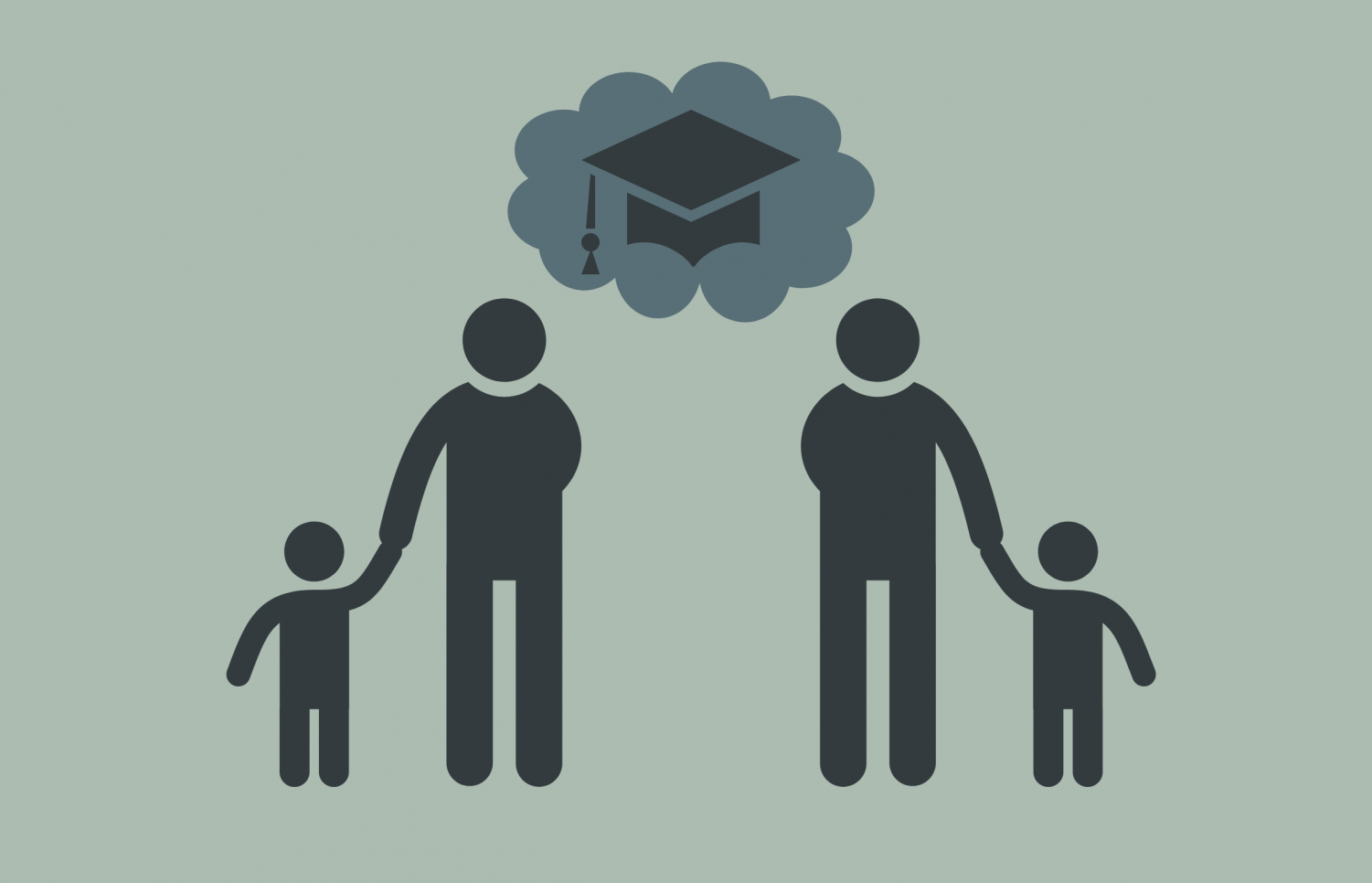Your donation will support the student journalists of West High School. Your contribution will allow us to purchase Scholarship Yearbooks, newsroom equipment and cover our annual website hosting costs.
On call: students, siblings and learning online
Students and teachers share their experiences juggling online school and taking care of younger family members.
September 30, 2020
WSS is covering the changes in learning models and their subsequent effects on students. To read the next installment in the series, “The hybrid gap,” click here.
Even in a normal school year, it can be difficult to balance school and home life. The COVID-19 pandemic has brought this clash to the forefront. With everyone doing school at home up until this week, it’s been difficult balancing the two, especially for students with siblings.
Eghosasere Sule ’23 is the oldest in her family, so it’s her responsibility to be there when her siblings need help. With a sister in middle school and two elementary age brothers, there can be a lot to deal with.
“If they don’t understand something in their class, or they need an adult to come help them, I’m the closest thing that they can get to an adult if my parents are busy, or even if they’re not busy, [sometimes my siblings] just want to come and stay with me in my room, and I let them do that,” Sule said.
Having these additional responsibilities outside of standard schoolwork, from making lunch to helping with technology, can take a toll on students. Howaida Musa ’23 has two elementary-age siblings who need help with their assignments.
 “There are times when my brother can’t finish all his homework the day that it’s assigned, so he’ll go three days without completing his homework and we’ll just have to wait until the weekend comes,” Musa said. “This has stressed me out when it comes to my homework as well as how much I’m learning in class since I do have to miss some of my class time to help my siblings, and sometimes my siblings have to miss some of their class time as well because I was not able to help them in that moment.”
“There are times when my brother can’t finish all his homework the day that it’s assigned, so he’ll go three days without completing his homework and we’ll just have to wait until the weekend comes,” Musa said. “This has stressed me out when it comes to my homework as well as how much I’m learning in class since I do have to miss some of my class time to help my siblings, and sometimes my siblings have to miss some of their class time as well because I was not able to help them in that moment.”
It can be frustrating when teachers don’t understand the stress students who double as older siblings are under. There’s a lot that goes on behind the scenes.
“I know a lot of my assignments, I’ve been handing them in at like 1 a.m. because those are the times I have to sit down and just do my assignment,” Sule said. “If I don’t hand in an assignment and my marks start to drop because of that, or I forget to do an assignment, it’s not just because of all the other classes we have to do. I have to watch my siblings, I have to help them, I have to do my chores at home, I have to make sure that everything is running perfectly.”
According to Sule, along with lack of time to complete assignments, there is also the problem of focusing.
“If I’m having difficulty remembering things or understanding lessons, it’s probably because my mind is focused on something else that I have to do, or that I forgot to do during the day, and I just try to recollect everything back together before my next class. It’s becoming really stressful for me,” Sule said.
Many teachers are trying their best to compensate. Anson Kritsch, social studies teacher, has been doing practice tests to gauge where more help is needed and where to focus instruction, as well as being open and understanding when students say they’re struggling.
“It has always been important to check in with students, but this year has brought that issue to the forefront,” Kritsch said. “In the classroom you often get immediate social cues to how students are doing with any given lesson or activity. On Zoom, and worse yet on remote days, it is nearly impossible to know who has not only followed along, but also understood the lesson for the day.”

There have been challenges adjusting for less student interaction time, but it’s a learning process. So far, Kritsch is thankful that the pandemic has given new tools to help students that may be useful in the future as well.
“Generally, I see this as a net win overall because I certainly have started doing many things that in a normal year I wouldn’t do. And many of these new things, while difficult and stressful at times, are things I will most likely continue to use in the future,” Kritsch said.
Social studies teacher Jessica Mehegan also has been working to connect with students while online. With two young children aged 1 and 2, she understands the difficulties of balancing the two.
“Everything in the spring was really stressful. Just trying to manage it and balance everything—that was hard, this fall,” Mehegan said. “It has been hard trying to find a space to work in our house and work around their schedules and be present with them but also be working.”
An added struggle arose when Mehegan contracted COVID-19 and had to distance from them, parent and teach at the same time. Even so, similar to Kritsch, she’s been working to keep up with students through email and Zoom.
“If a kid’s like, ‘Hey, I really want to talk to you about this class’ or, ‘What’s going on’ or, ‘I’m missing this’, ‘Can we talk about this assignment’ or whatever, then I just will create a Zoom really quick and then we can do that. That’s a lot easier than trying to catch somebody in the physical space,” Mehegan said.
Still, these measures only go so far. For Musa, it feels like there’s a disconnect. For one thing, there can be difficulties with the internet, and then she’s counted tardy or absent. For another, it still feels like some teachers don’t fully understand the amount of responsibilities older siblings have.
“Teachers give a lot of assignments for every meeting, and I think it’s because they think that we have nothing to do since we’re at home the whole day,” Musa said. “I wish that they would understand that some of us have siblings and that we need to help our siblings as well.”

With the opening of the hybrid learning model on Sept. 28, Musa has hope. Having teachers there to help both her siblings and herself will hopefully relieve some of the stress.
“My brother is able to get better help at school from his teachers [and] his ELL teachers, and can learn more because the experience is different in person compared to behind a screen,” Musa said. “I think some things will be easier for me as well because I will be there with the teacher, and I learn best from the experience itself from being inside the classroom with the visuals.”
Sule, who is also enrolled in hybrid, echoes this sentiment.
“It’ll be a lot easier because I’ll be at school worrying about myself and then they’ll be at their school and they’ll have people helping them with their things,” Sule said. “It’s just like when you’re at home you just have to do whatever you can to help everyone get situated, but [at school] you can do your own thing and be independent.”


